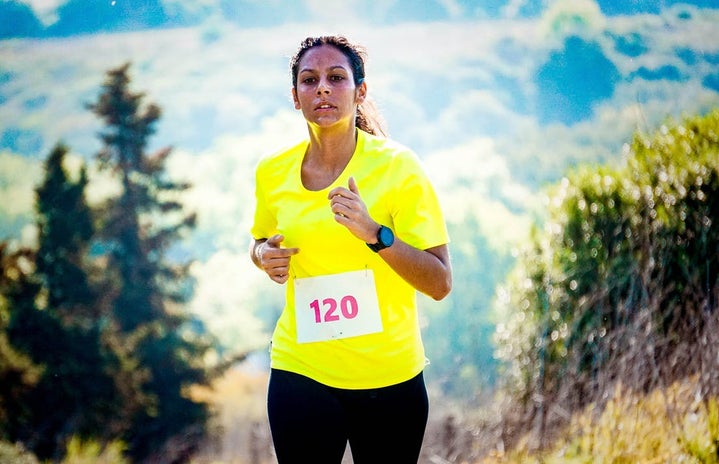In the mid-sized Boston suburb I grew up in, organized sports teams were considered a “normal” activity to get involved in throughout elementary, middle and high school. Soccer practices after school, trips to the ice cream store after games and fun carpool rides to practices are some of my favorite memories from organized sports growing up. However, beginning in middle school, friends and teammates started to miss town sports practices for their more competitive, selective club teams. My parents, wanting to support me in figuring out what I was passionate about, were in full support of me joining a local club lacrosse team. At first, the team seemed full of fun, enthusiastic teammates and coaches; it seemed like a team I would enjoy being with every weekend for practice and on long drives to tournaments across New England. As eighth grade progressed, though, talk about college recruitment began within the club team and parents were often asked to stay after practice to learn how to set their child up for success in college. All of a sudden, I was so confused. How did this fun, refreshing activity with friends become a full-on conversation about college recruitment? After all, I was fourteen years old.
As my freshman and sophomore year of high school went on, I started to find less and less passion on the lacrosse field. I had joined the sport to make friends, have fun and enjoy all the other fun outings that being part of a sports team had always entailed. However, post-game ice cream trips quickly turned into friend’s parents going over their child’s game performance on the car ride home. It was no longer benefiting me and was no longer what I wanted it to be.
Starting my junior year, I started to get involved with more community service-based activities rather than competitive sports teams. During a service trip to Rwanda in my sophomore year, my group worked with an organization that used basketball as a means to create/cultivate confidence, community, personal health and hygiene in low-income Rwandan communities. This organization immediately inspired me to start thinking about physical activity as a way to bring people together in a positive light. I remember surfing the internet one late summer night for a place to get involved with and finding an organization that used running as a basis for educating and inspiring young girls.
Girls on the Run immediately stood out to me as an organization that I wanted to get involved with. I began by signing up to be a “junior coach” on a local team near my high school and going to practice quickly became one of my favorite parts of the week. I was one of three coach volunteers, the other of whom were mothers to girls on the team and running enthusiasts. The team had roughly twelve girls in third and fourth grade and met twice a week for practices at a local running track. Each lesson began by introducing the girls to a theme, for example “Setting Boundaries,” followed by an accompanying discussion about that theme and what it meant to each of us individually. The lessons are age-appropriate and incorporate different physical activities that use running as a means to further understand the practice’s theme. At the end of practice, we discussed the theme more and what we learned that practice about ourselves and our teammates. After 10 weeks of lessons and practices, the girls participated in a 5K run, where every team from the chapter came together to celebrate the season.

When the pandemic hit, I chose to take the season off of coaching despite GOTR offering a virtual option. Coming to the Santa Clara area this spring, I was so excited to find out there was a Silicon Valley GOTR chapter and knew I wanted to get involved. Despite being across the country from Boston, the team I’m coaching this spring is very similar to past GOTR teams I’ve been part of. Filled with girls excited to be together, learn from each other, learn from the coaches and learn more about themselves, GOTR is still one of my favorite parts of the week.

Reflecting on my own experiences with organized sports and how competitive they became once I hit middle school, I look at the girls I’m working with now and selfishly don’t want that to happen to them. Certainly, everyone feels different about competition, but when I see these girls and how excited they are to just have fun and learn about themselves and each other, I believe that this is what sports should be about for kids. And, the beauty about Girls on the Run is that we give the girls tools at such a young age to be more aware, kind and inspired, as they go into years of development in middle and high school that is bound to be difficult at times.



